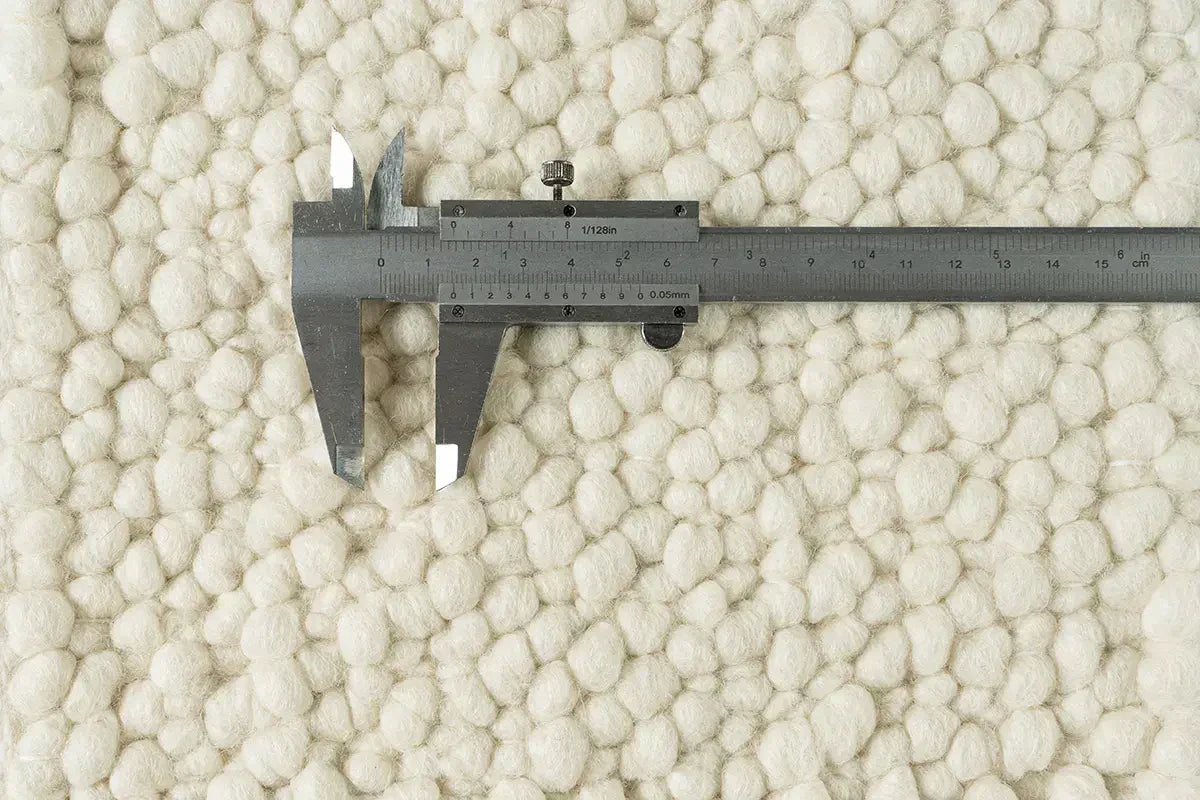Seeing the texture: Understanding the design language of carpets from their texture

Preface
When most people choose a carpet, they are always attracted by the pattern and color at first glance, but they overlook another deeper factor: texture . It is the soul that determines the texture and atmosphere of the carpet.
Carpets are essentially two-dimensional decorative art . Unlike furniture, they possess a structure, nor can they be viewed from all angles like sculptures. For this reason, carpet designers must carefully plan their work, creating light, shadow, and depth through texture. This allows a flat fabric to exhibit a variety of appearances and a three-dimensional feel, creating an interaction with the space.
What is texture?
"Texture" is not just a concave and convex surface, but a comprehensive experience of vision, touch and structure .
- Visual texture : The flow of light and shadow between the piles at different heights makes the pattern as vivid as a relief.
- Tactile texture : When you step on it barefoot or touch it with your hands, you can feel soft, rough or elastic.
- Structural texture : The "skeleton" determined by the yarn and weaving method supports the three-dimensional sense of the carpet.
The presence of texture allows an originally flat work to show depth and layers in space.
How is texture formed?
Before delving into texture, it's worth mentioning that the material itself also influences its sensory perception . Silk's luster enhances delicacy and fluidity, wool offers a rich and natural texture, while synthetic fibers offer a more structured and durable feel. While these differences do alter our perception of texture, the true essence of a carpet's three-dimensionality and depth lies in the designer's ingenuity in the yarn, weave, and finishing.
1. The Secret of Yarn
The story of carpet begins with yarn~
- Single yarn : delicate and smooth, capable of depicting exquisite patterns (for example: our site’s high-density series such as Da Vinci↗️ , Contemporary Artists↗️ , and Antique Silver↗️ ).
- Multi-strand twisted yarn : thick and durable, the changing light and shadow can produce a stronger three-dimensional effect (ex: the charm of this site↗️, Dawn↗️, etc.).
- Mix and match high and low twists : the carpet surface can show changes in light and shadow. Designers often use this to create a sense of layering (for example: the Spectrum↗️ , Comfortable Home↗️ , Elegant↗️ and other series on this site).
2. The language of weaving
The weaving method creates different texture expressions.
- Flatweave : Thin and durable, with a flatter texture, suitable for minimalist or summer spaces (e.g. Highland Wool on this site↗️
- ).
- Cut Pile : After the coils are cut, the pile becomes fluffy, which is soft to the touch, with regular hair direction, and a big visual difference between the forward and reverse hair direction (for example: Soho↗️ , Kashqai↗️ and other wool blankets on this site).
- Loop Pile : The loops are retained without being cut, the texture is strong and durable, and the foot feel is three-dimensional (for example: this site's Best wool↗️ wool blanket).
- Sheared and looped pile blend : using sheared and looped pile at the same time to make the pattern stand out like a relief (ex: our Flux wool blanket ↗️ ).
3. Dyed Soul
Once the color is absorbed into the fibers, it works with the texture to create the atmosphere.
- Space-dyeing : A single yarn presents multiple colors, creating a natural transition (for example: 045.069.990Cube↗️ and Djobie wool blanket↗️ under the Ligne Pure brand on this site).
- Mottled/Abrash : Deliberately retaining color differences to give the carpet a sense of age and artistic atmosphere (for example: the canyon mottled carpet on this site ↗️ ).
- Gradient design : Using the interweaving of different colored yarns, the image is imbued with depth, like a wash painting. (Example: Gradient color carpet collection on this site ↗️ )
4. Post-processing carving
The finished carpet can also have its texture enhanced through processing techniques.
- Carving : Handmade rugs are cut with scissors or electric shears, or with the drop-stitch method used in machine-woven rugs, to create a more prominent pattern border (for example: our Trentino solid carved rugs↗️ and Valentino abstract art rugs↗️ ).
- Embossed/embossed : Combining different yarn types or heat treatment methods to create localized bumps and grooves, suitable for geometric or abstract designs (for example: Lana wool ↗️ , Lira wool ↗️, etc. on this site).
Why is texture important?
If pattern and color are a rug's "appearance," then texture is its soul. Without it, a rug is simply a flat pattern; with it, it can express a variety of styles through the play of light and shadow, even transforming the atmosphere of an entire space.
- In the modern minimalist style, delicate short (shear) velvet can add low-key luxury.
- In the classical space, the combination of high and low velvet and carvings makes the totem more three-dimensional.
- In natural or Nordic styles, rough textures and distressed colors convey a sense of simplicity and real life.
- On a completely plain carpet, relying solely on superb hand-twisting techniques can create rich and deep textures and present a high-quality feel.
Conclusion
Although carpets are flat decorative items, they can show three-dimensionality and depth through their texture, bringing a multi-layered experience of light and shadow, touch and sense of time.
When you walk into a space, it's often not the color that truly impacts the atmosphere, but the delicate undulations and softness beneath your feet. It's the language of texture—it breathes life into the space and adds a layer of warmth to everyday life. Texture is where the true value of a carpet lies!






